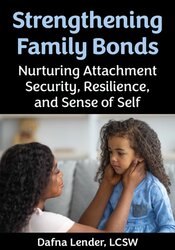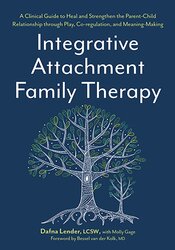Healing Parent-Child Estrangement: A Guide for Therapists

Estrangement between a parent and child is one of the most painful relational ruptures a family can face. It's often marked by a prolonged or indefinite break in contact, and unlike typical family conflict, estrangement tends to feel more permanent—steeped in grief, confusion, and unresolved pain.
As therapists, we’re increasingly seeing clients who are either estranged from a parent or cut off by their adult child. Understanding the emotional, developmental, and relational dynamics at play can make the difference between reinforcing cycles of blame and helping clients begin to heal.
Many clients carry assumptions about estrangement that can cloud their ability to process it. Some believe that reconciliation should come quickly once an apology is offered. Others feel paralyzed by guilt, unsure if healing is even possible. Our role is to bring clarity and compassion to what is often an incredibly isolating experience.
In some families, a new spouse or partner can complicate loyalties and boundary-setting. In others, longstanding mental health issues, addiction, or family dysfunction contribute to a sense of emotional unsafety. It’s crucial to explore these histories without reinforcing narratives of blame or defensiveness.
For parents, the experience of being cut off can be devastating. Feelings of shame, confusion, and grief are common, along with a deep fear of dying without reconciliation. Social stigma can make it difficult for them to talk openly about their situation, compounding their sense of isolation.
Therapy can provide a safe container for these emotions. Helping clients process the rupture—without pathologizing the other person—requires deep empathy, neutrality, and care.
It’s equally important to guide clients toward acceptance. We cannot control another person’s willingness to reconnect. What we can control is how we show up—with integrity, boundaries, and openness to growth. Using frameworks like the "Circle of Control, Influence, and Concern" can help clients let go of the urge to fix or force reconciliation and instead focus on their own healing process.
Still, not every relationship can—or should—be repaired. Part of healing may involve grieving the relationship that was hoped for and finding meaning in a life without reconciliation. Clients can be encouraged to build fulfilling relationships elsewhere, engage in mindfulness practices, or explore supportive communities and therapy groups.
These stories remind us of the nuance behind every rupture. As therapists, we hold space for the heartbreak—but also for the hope.
Healing from estrangement doesn’t always mean reconciliation. Sometimes it means making peace with what was lost. Other times, it means slowly building something new—one respectful, intentional interaction at a time. Whether your client is the one who initiated the cut-off or the one left behind, therapy can be a powerful tool for understanding, grieving, and moving forward.
As therapists, we don’t have to have the answers. But we do have the ability to hold space for the questions, to offer compassion in the face of pain, and to help our clients find healing—whether or not reconciliation ever comes.
As therapists, we’re increasingly seeing clients who are either estranged from a parent or cut off by their adult child. Understanding the emotional, developmental, and relational dynamics at play can make the difference between reinforcing cycles of blame and helping clients begin to heal.
Understanding Estrangement
Estrangement isn’t always the result of abuse or neglect—nor is it always someone’s "fault." While it can stem from serious harm, it often arises from a buildup of unmet needs, miscommunication, and differences in values that have gone unaddressed for too long. Sometimes, it's the adult child who needs space to protect their well-being. Other times, it’s a parent who withdraws after feeling rejected or misunderstood. In either case, the emotional toll runs deep.Many clients carry assumptions about estrangement that can cloud their ability to process it. Some believe that reconciliation should come quickly once an apology is offered. Others feel paralyzed by guilt, unsure if healing is even possible. Our role is to bring clarity and compassion to what is often an incredibly isolating experience.
Why Families Become Estranged
Estrangement is rarely the result of a single event. Instead, it tends to build over time through a combination of unresolved pain, value clashes, and relational dynamics. Differences in cultural beliefs, religious or political views, or lifestyle choices often play a role. Some estrangements arise from childhood wounds—emotional neglect, controlling behavior, or trauma that was never acknowledged or healed.In some families, a new spouse or partner can complicate loyalties and boundary-setting. In others, longstanding mental health issues, addiction, or family dysfunction contribute to a sense of emotional unsafety. It’s crucial to explore these histories without reinforcing narratives of blame or defensiveness.
The Emotional Impact
The emotional toll of estrangement affects both sides—those who initiate the cut-off and those left behind. Adult children who pull away often do so after years of trying to be heard or understood. The decision to go no-contact can bring relief, but also guilt, sadness, or lingering questions.For parents, the experience of being cut off can be devastating. Feelings of shame, confusion, and grief are common, along with a deep fear of dying without reconciliation. Social stigma can make it difficult for them to talk openly about their situation, compounding their sense of isolation.
Therapy can provide a safe container for these emotions. Helping clients process the rupture—without pathologizing the other person—requires deep empathy, neutrality, and care.
Supporting Clients Through Healing
One of the most powerful tools we can offer is perspective. Therapy can help clients reflect on their own patterns, explore family history, and get curious about the underlying reasons behind the estrangement. This might involve assessing attachment styles, trauma history, or intergenerational cut-off patterns.It’s equally important to guide clients toward acceptance. We cannot control another person’s willingness to reconnect. What we can control is how we show up—with integrity, boundaries, and openness to growth. Using frameworks like the "Circle of Control, Influence, and Concern" can help clients let go of the urge to fix or force reconciliation and instead focus on their own healing process.
Rebuilding—or Letting Go
When both parties are open to reconnection, reconciliation becomes possible—but it rarely happens all at once. Trust must be rebuilt slowly and consistently, through action more than words. Apologies must be sincere, free of qualifiers like “if” or “but.” Validation is key: people need to feel seen and heard before they’re ready to forgive.Still, not every relationship can—or should—be repaired. Part of healing may involve grieving the relationship that was hoped for and finding meaning in a life without reconciliation. Clients can be encouraged to build fulfilling relationships elsewhere, engage in mindfulness practices, or explore supportive communities and therapy groups.
Real-Life Complexity
Every estrangement story is different. In Dafna Lender’s work, we see this through examples like Tia, who cut off contact with her father after witnessing years of emotional abuse, only to face difficult decisions when he was dying. Or James, who couldn’t reconcile with his father despite an attempted apology after years of complex trauma. And Glenda, whose mother initiated the cut-off after tensions arose around gender identity and shifting family roles.These stories remind us of the nuance behind every rupture. As therapists, we hold space for the heartbreak—but also for the hope.
Healing from estrangement doesn’t always mean reconciliation. Sometimes it means making peace with what was lost. Other times, it means slowly building something new—one respectful, intentional interaction at a time. Whether your client is the one who initiated the cut-off or the one left behind, therapy can be a powerful tool for understanding, grieving, and moving forward.
As therapists, we don’t have to have the answers. But we do have the ability to hold space for the questions, to offer compassion in the face of pain, and to help our clients find healing—whether or not reconciliation ever comes.
Strengthening Family Bonds: Nurturing Attachment Security, Resilience, and Sense of Self

The crucial and often missing piece of therapeutic attachment work with children...is creating a strong alliance with parents/caregivers.
Join Dafna Lender, developer and author of Integrative Attachment Family Therapy as she walks you through a detailed case example, illustrating the process of assessment, conceptualization and treatment of attachment insecurities within a parent-child dyad.
A must attend event for learning to facilitate parent-child dialogues to promote true healing and connection.
Join Dafna Lender, developer and author of Integrative Attachment Family Therapy as she walks you through a detailed case example, illustrating the process of assessment, conceptualization and treatment of attachment insecurities within a parent-child dyad.
A must attend event for learning to facilitate parent-child dialogues to promote true healing and connection.
Integrative Attachment Family Therapy

Integrated Attachment Family Therapy (IAFT), developed by family therapy expert and attachment specialist Dafna Lender, is a powerful intervention approach that addresses a wide array of issues that make their way to a therapist’s office: difficult behaviors on the part of the child, such as frequent arguments and tantrums, disobedience, and indifference, and reactive behaviors on the part of the parents, such as yelling, pleading, threatening, and giving up or giving in.
Instead of viewing the child as the problem, IAFT addresses the crux of the issue: a misalignment in the parent-child relationship. In this treatment guide, Dafna walks readers through the IAFT framework, providing therapeutic insight and concrete strategies to help families achieve meaningful and lasting change.
With this clinical guide, you can truly help families transform into happy and well-functioning environments where children can thrive.
Instead of viewing the child as the problem, IAFT addresses the crux of the issue: a misalignment in the parent-child relationship. In this treatment guide, Dafna walks readers through the IAFT framework, providing therapeutic insight and concrete strategies to help families achieve meaningful and lasting change.
With this clinical guide, you can truly help families transform into happy and well-functioning environments where children can thrive.
Meet the Expert:
Dafna Lender, LCSW, is an international trainer and supervisor for practitioners who work with children and families. She is a certified trainer and supervisor/consultant in both Theraplay and Dyadic Developmental Psychotherapy (DDP) and an EMDR therapist. Dafna’s expertise is drawn from 25 years of working with families with attachment in many settings: at-risk after school programs, therapeutic foster care, in-home crisis stabilization, residential care and private practice. Dafna’s style, whether as a therapist or teacher, is combining the light-hearted with the profound by bringing a playful, intense and passionate presence to every encounter.
Learn more about her educational products, including upcoming live seminars, by clicking here.
Learn more about her educational products, including upcoming live seminars, by clicking here.



